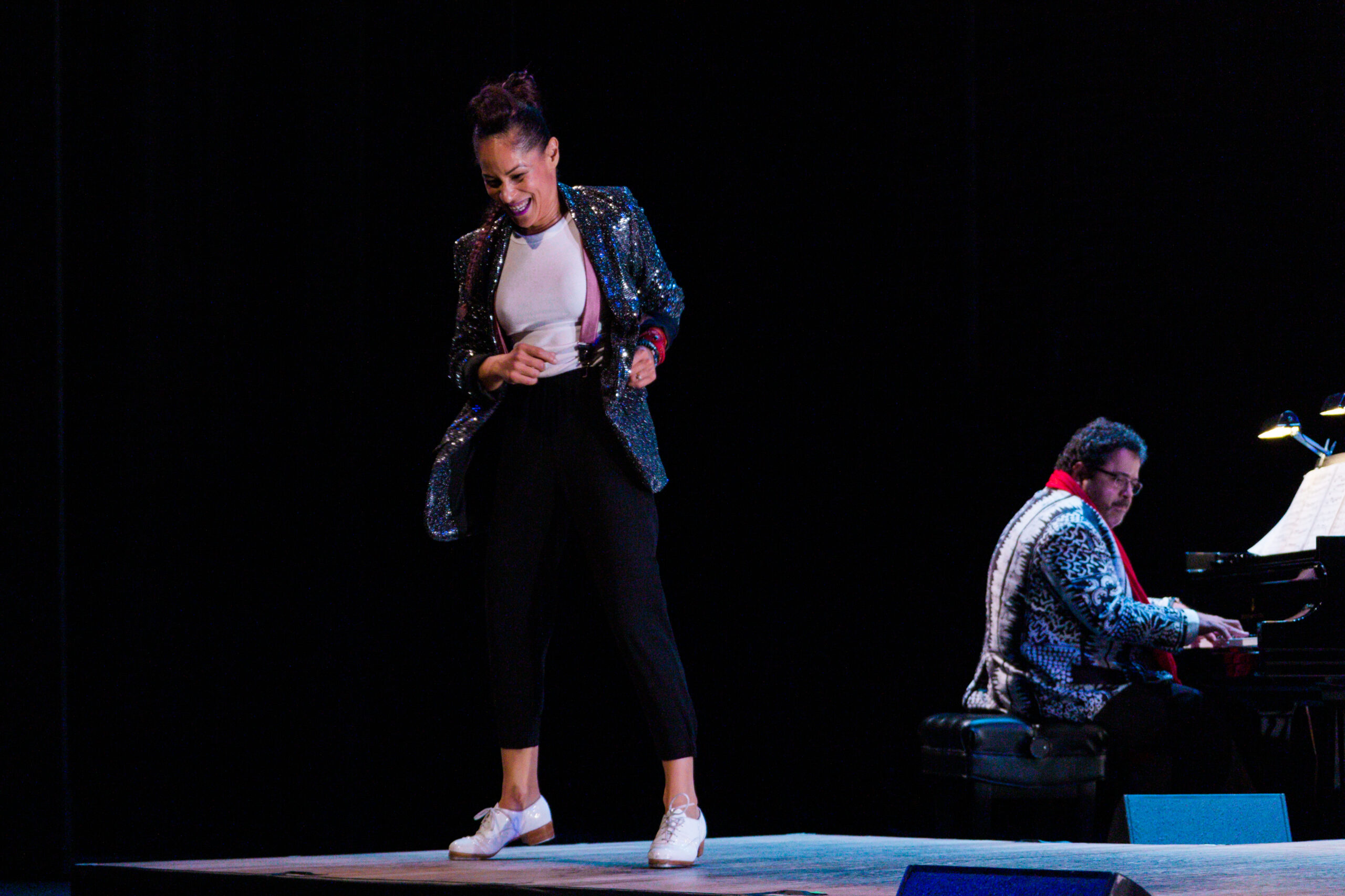4 Choreographers and Their Go-To Nondancer Collaborators on Making Magic Together
For choreographers, the name of the game is, frequently, collaboration: with dancers, with designers, with composers. But what about the choreographers who find artistic soulmates, making long-term collaboration central to how they create work? That kind of partnership can transcend disciplines, decades, and dynamic approaches, leading to a distinctly exciting kind of art-making. For the four duos featured here, finding an artistic partner in crime has led them to make some of their most challenging, boundary-pushing, and, ultimately, rewarding work.
Ayodele Casel and Arturo O’Farrill
“It’s frightening and glorifying at the same time.”
To hear tap dancer and choreographer Ayodele Casel and jazz musician Arturo O’Farrill talk about their artistic partnership is a lot like watching them improvise together onstage: You sense their joy, gratitude, faith, and, perhaps most importantly, Zen-like connection. “The thing that’s boggled my mind the most and also settled me right away in working with Arturo is that feeling of familiarity and home and trust and play,” says Casel.
That rush of seemingly contradictory feelings is something O’Farrill experiences during performance, too. “When I get in front of Ayodele and next to a piano and throw down, it’s frightening and glorifying at the same time,” he says. “It’s like playing in a cosmic sandbox.”
When Casel was filming Chasing Magic, a 2021 virtual performance at The Joyce Theater with O’Farrill (and several other collaborators), she was confident enough in their improvisatory mind-meld to not meticulously plan what their contribution to the concert might be. “I said, ‘Arturo, do you want to come to The Joyce in, like, 10 minutes?’ ” she remembers. “He came onto the stage, we had a brief conversation, and then we jumped right in. Fourteen minutes later, [director] Torya [Beard] was like, ‘Okay!’ ”
Casel cites an ability to deeply, meditatively listen to each other as necessary for that kind of extraordinary encounter. O’Farrill likens it to a letting go of expectation and orchestration. “When you first meet somebody, you think, Let’s fill in every dot,” he says. “You have to get past the ‘Oh my god, what are we doing?’ Now, we know that we don’t know what we’re doing. But as you get older you’re like, ‘Wow, this is exactly what art is supposed to be.’ ”
David Roussève and cari ann shim sham*
“We’re wielding our swords together.”
Choreographer, writer, and director David Roussève and multidisciplinary artist cari ann shim sham* have a nearly 25-year artistic relationship that could perhaps best be described as fluid. They met when shim sham* was a student of Roussève’s at the University of California, Los Angeles. Since then, shim sham* has been, at different times, his cinematographer, his film editor, and even a one-time performer in Roussève’s choreography. But she’s also been his teacher, as when Roussève first forayed into dance film and needed help finding his “sea legs,” as he puts it, as well as his creative collaborator in more recent projects, like 2018’s Halfway to Dawn, with choreography and text by Roussève and video by shim sham*.
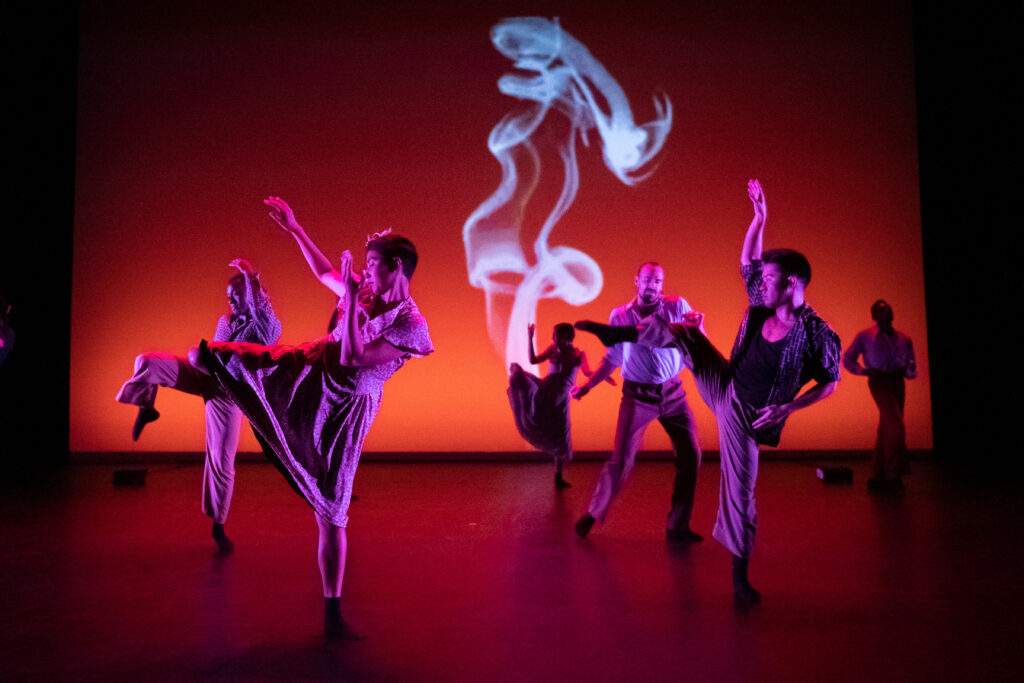
“What I appreciate about cari ann is that she’ll say, ‘I don’t know if this is going to work. Let’s just try it,’ ” says Roussève. That kind of experimental ideation fuels their partnership in a way Roussève had never experienced previously. “I used to think, I need a collaborator who can execute my vision,” he says. “Over time, you realize a good collaborator is going to have better ideas than you.”
Shim sham* credits their chemistry to the ways in which they balance each other. “David is a wordsmith,” she says. “I’m not strong with words, but I’m very strong with visuals and imagery. David is so good at setting up metaphors that I can then visualize through imagery.”
At the root of their ease and trust is a shared belief in art’s ability to provoke. Roussève describes their aesthetic as “socially interested” and “askew.” “We both have really strong activist standpoints in our work,” agrees shim sham*. “We’re wielding our swords together.”
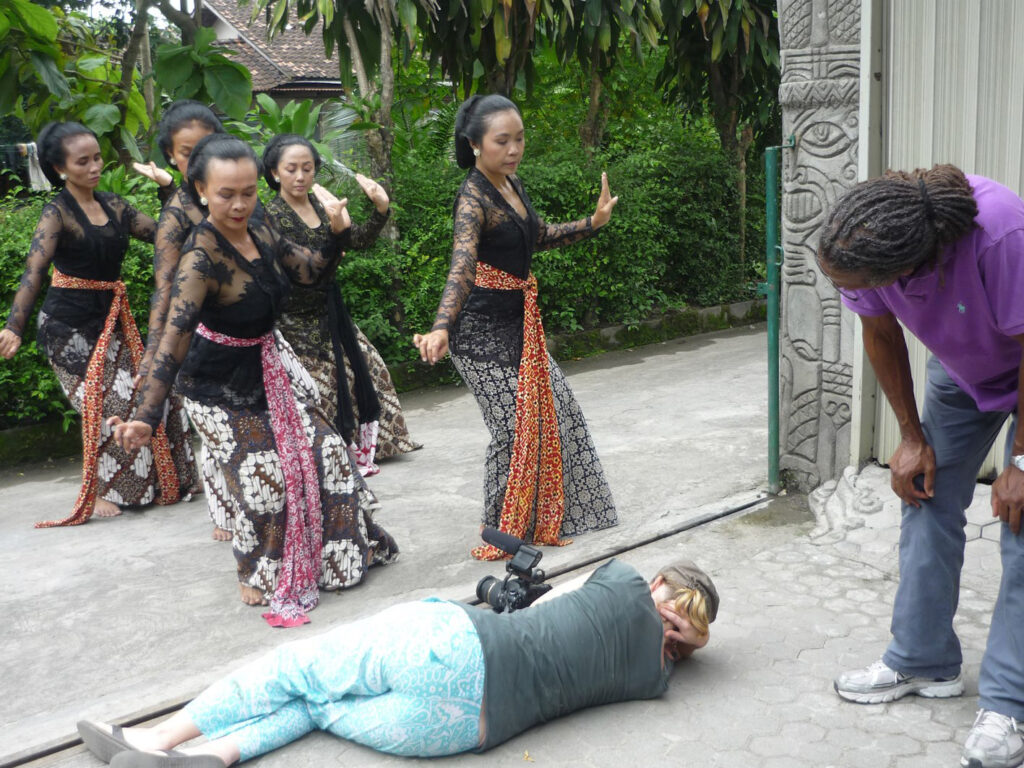
Cynthia Oliver and Jason Finkelman
“It’s magic. It is sleight of hand.”
Unlike most artistic collaborators, choreographer Cynthia Oliver and composer Jason Finkelman don’t get the downtime that comes from being able to say goodbye at the end of a long day. That’s because Oliver and Finkelman, who have been working together for almost as long as they’ve known each other, are married.
That relationship can sometimes lead to, say, freer discussion than what might take place between two artists still learning each other’s sensitivities. “There’s the moment in rehearsal when I tell the dancers that Jason is coming in, and we’re going to have little conversations in the corner,” says Oliver. “I tell them there’s going to be tension—we might even fight a little bit—but don’t be alarmed. This is what we do.”
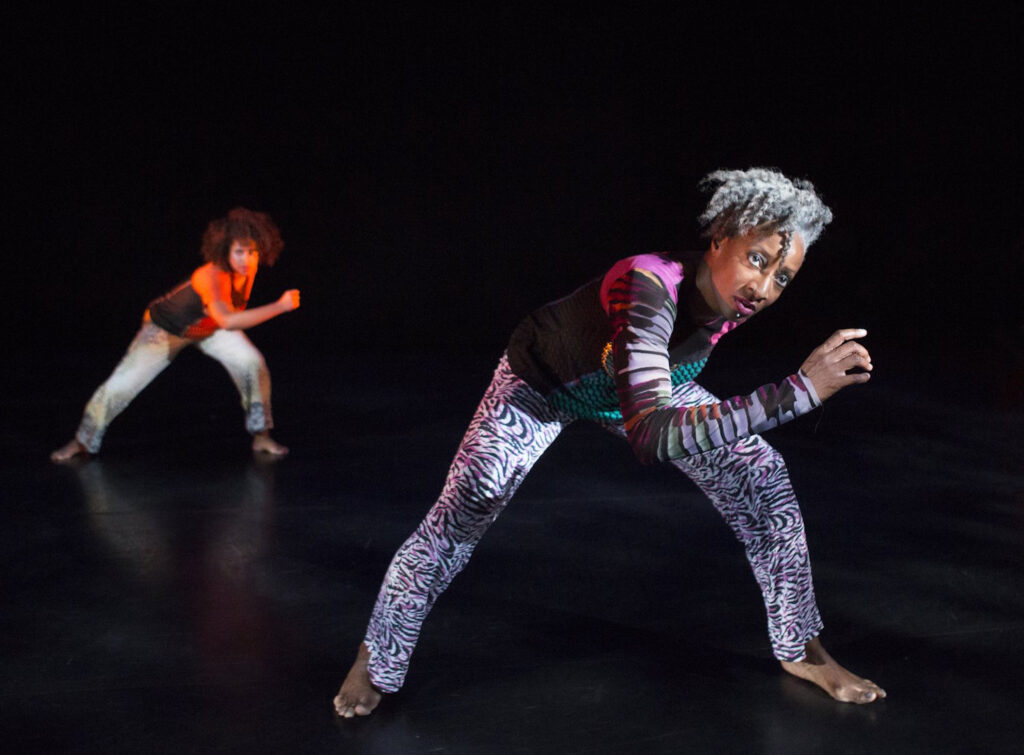
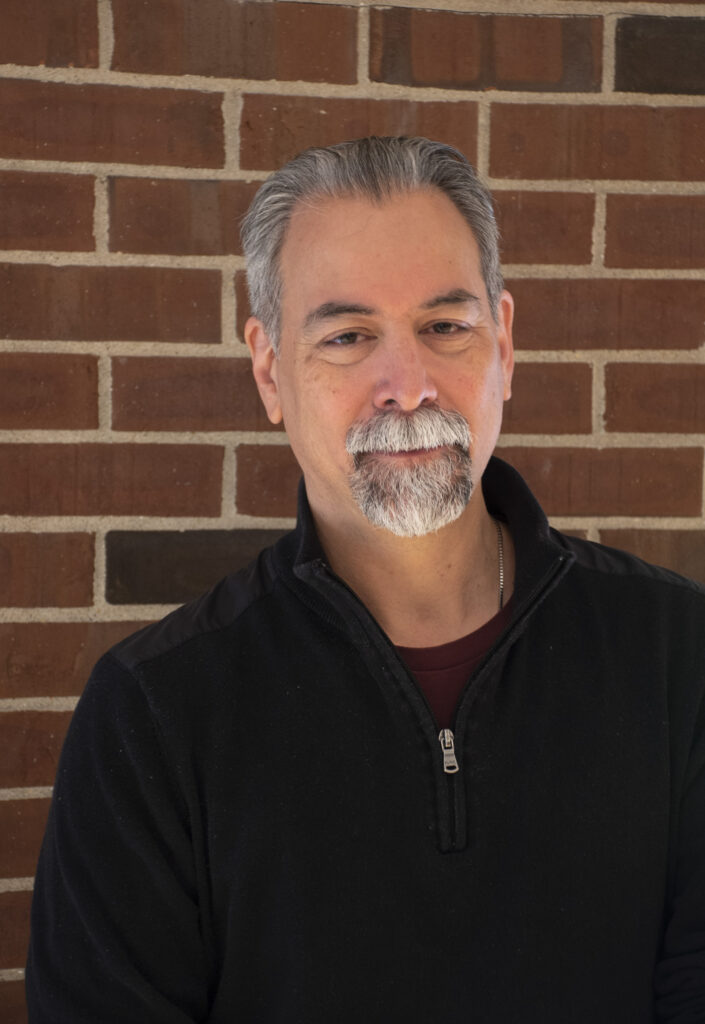
Their process has taken many shapes over their decades together, but Finkelman always demands that the score be in service to Oliver’s space-devouring, nuanced movement. “I’m always looking for what the choreography is calling for,” he says. “Something to drive the dance? To underscore the text? To propel or emphasize the silence?”
Despite its longevity, their partnership shows no sign of stagnation or fatigue. “It’s magic. It is sleight of hand,” says Oliver. “We don’t even know how it manifests, but ultimately something comes out of the fairy dust of these conversations—a commitment to making something together.”
Raja Feather Kelly and Michael R. Jackson
“It feels like we were always together.”
Months before they started working together on the musical A Strange Loop in 2018, choreographer Raja Feather Kelly and playwright-composer-lyricist Michael R. Jackson kept hearing from mutual colleagues that they needed to collaborate. They chalk this up partly to their similarities as people and artists—“We’re both Black gay men, both queer artists who have a similar iconoclastic, experimental, counterculture point of view,” says Jackson—but also to their immediate, uncanny connection. “I can’t recall a time before our collaboration or friendship began, or what it was like in the early parts of it, because it feels like we were always together,” says Jackson. “Raja just came in, and he was magical.”
That magic helped them communicate easily despite their admittedly different artistic disciplines. “We both really love popular culture,” says Kelly, as an example. “In the moments where it might be difficult to find a common language, we’ll find analogies for each other: ‘This is a Kanye-Kardashian/OJ Simpson kind of thing’ versus ‘This is Mean Girls meets Heathers meets [Beetlejuice’s] Lydia Deetz kind of thing.’ ”
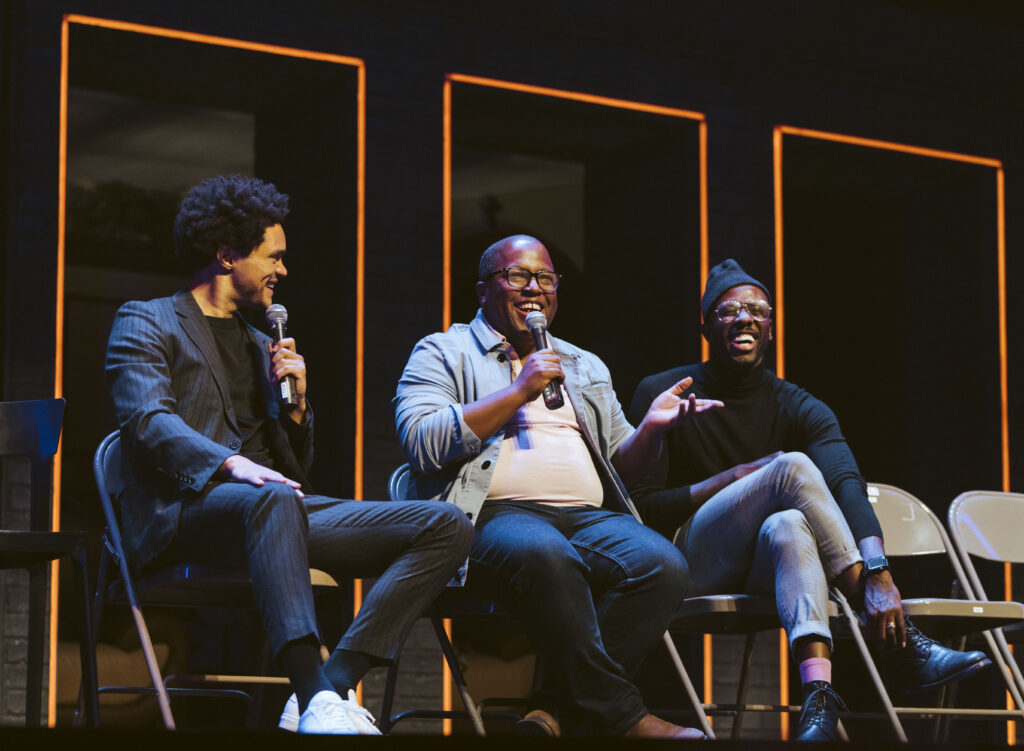
They stretch each other, too, which leads to an occasionally challenging but ultimately deeper collaborative practice. “On A Strange Loop, I had come late in the process with an entirely rewritten opening number,” says Jackson. “Raja was like, ‘I need a dance break,’ which I had not planned for—I’d never written a dance break. But his provocation to me was that that was important, so he sent me home and I worked on it. And then we had a dance break in the opening number.”
The end result is always something neither could have conceived of without the other. As Kelly says, they are “artists who are influencing one another because of our desire to understand art better.”
